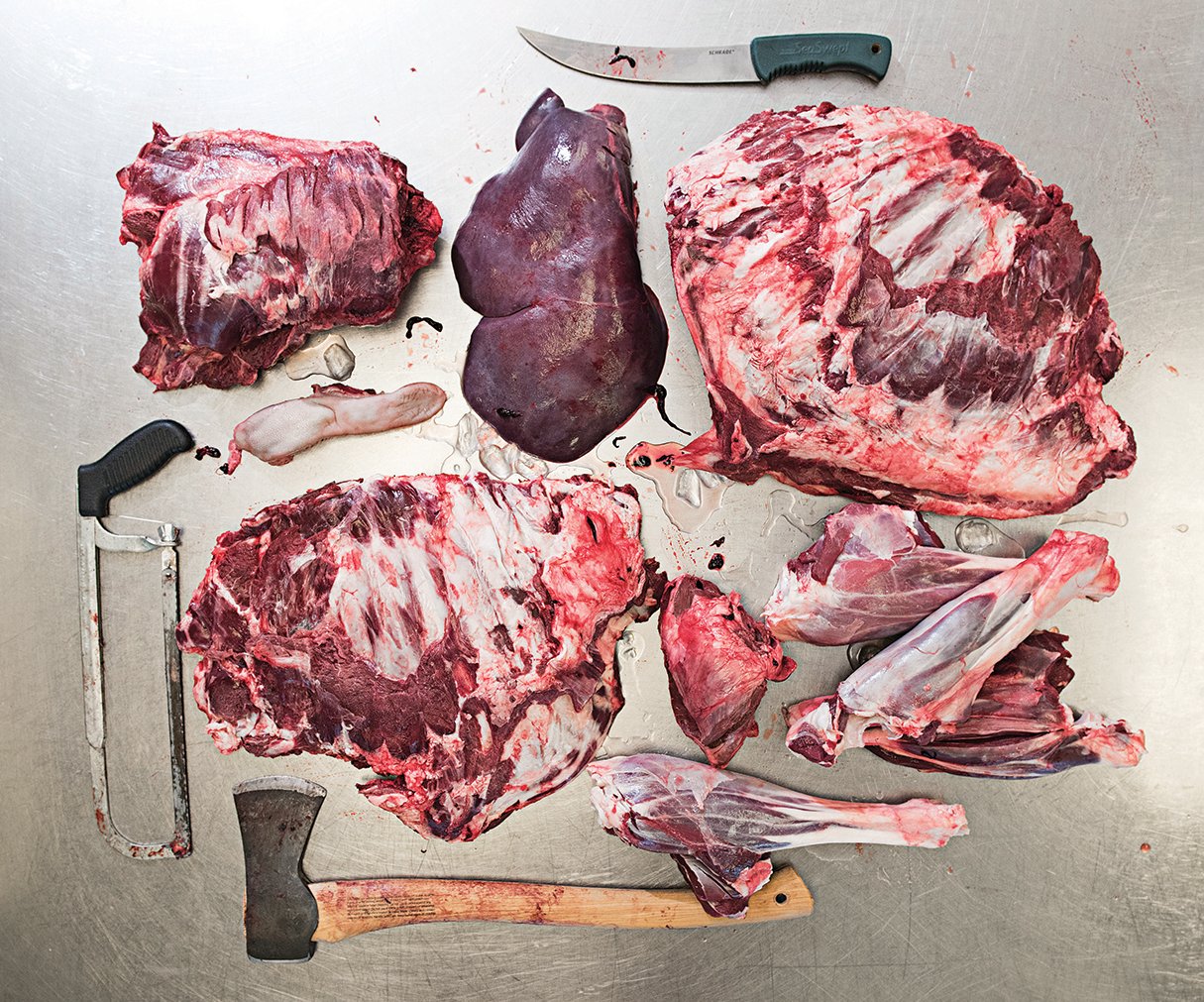Taking venison rom field to table is deeply rooted in tradition for most of us. As beginning hunters, we were taught how to cut around a diaphragm and carefully grill the tenderloins, and we pass that knowledge on. But sometimes, traditions need to be broken—or at least amended.
The growing popularity of wild meat has brought more creative recipes to the hunter’s table than ever before. In short, it’s time to look beyond tradition’s backstraps and burgers. So, our three wild-game writers have taken the pieces of meat that are usually left in the gut pile or the scrap bucket and turned them into some of the best venison dishes you’ll ever sink your teeth into.
Pan-Fried Liver
By Krissie Mason
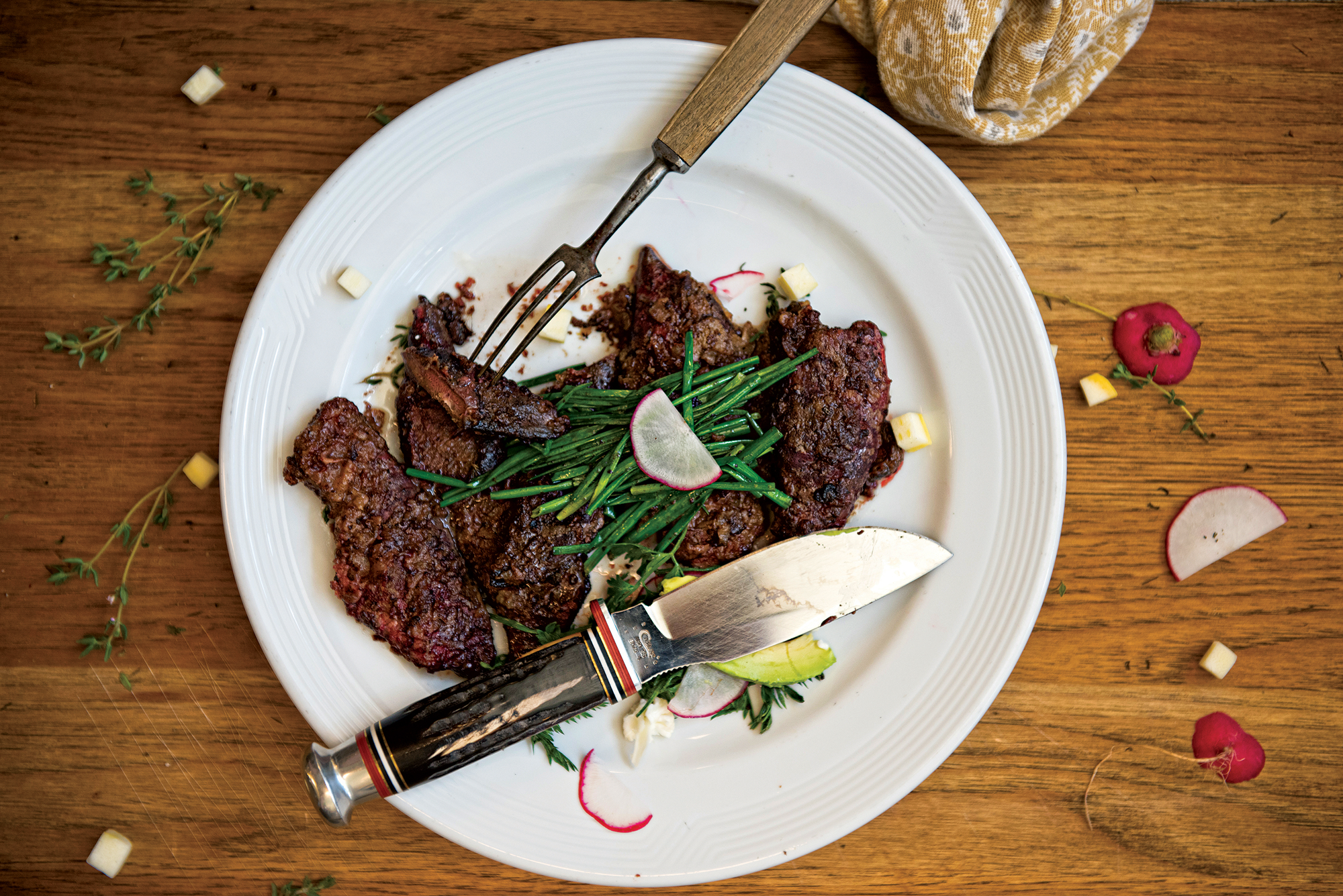
Bring a fresh liver into deer camp and one of your buddies will likely argue that you can’t eat it because it filters toxins. But the fact is, venison liver is packed with vitamins and nutrients. And most important, when prepared properly, it tastes delicious. So, here’s a hot take on liver venison (that doesn’t taste at all like traditional liver and onions). Serve it in camp and turn those skeptics into believers.
WHAT YOU’LL NEED
Half a deer liver
1 cup milk
Salt and pepper
¼ cup flour
2 Tbsp. canola oil
2 Tbsp. butter
1 sprig fresh rosemary
10 chives, cut into 3-inch pieces
Pan Fried Venison Liver by OutdoorLife
DIRECTIONS
Make the Cut: When you dress your deer, be careful not to cut through any major organs to keep the entrails clean. As you remove the guts, take care to keep the liver, which is a large deep-purple organ, out of the dirt. Cut the liver from the pile and clean it up with a fillet knife and fresh water.
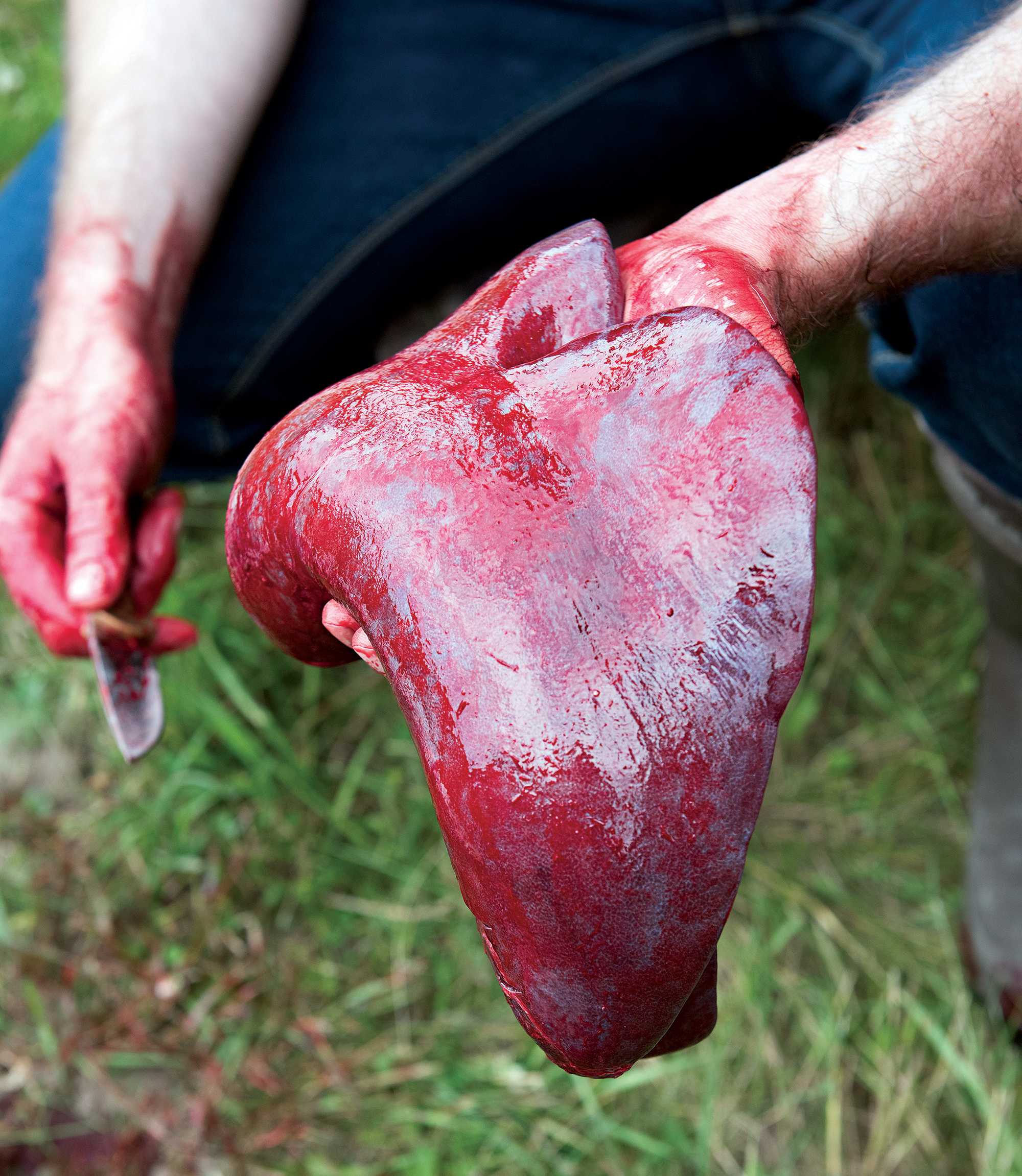
1. Slice half the liver into strips about 1-inch wide and ¼-inch thick. Soak the liver strips in the milk overnight.
2. Pat the liver strips dry and season with salt and pepper. Then, coat those babies with the flour.
3. Heat the canola oil in a sauté pan and add the liver strips, cooking until they’re golden brown. Then remove the strips from the pan.
4. Place the butter in the pan. When it’s good and melted, throw the rosemary in too. Place the liver back in the pan and baste the strips with the butter. Remove the liver when blood stops collecting on the tops of the slices.
5. Put the chives in the pan and coat them with the remaining butter.
6. Dress the liver strips with the chives and dig in.
Osso Buco and Gremolata
By Jamie Carlson
Osso buco is Italian for “bone with a hole.” Some recipes call for other cuts of meat, but a truly authentic osso buco is made with a cross-cut veal shank that is about 3 inches thick. We, of course, are going to swap the veal for venison.
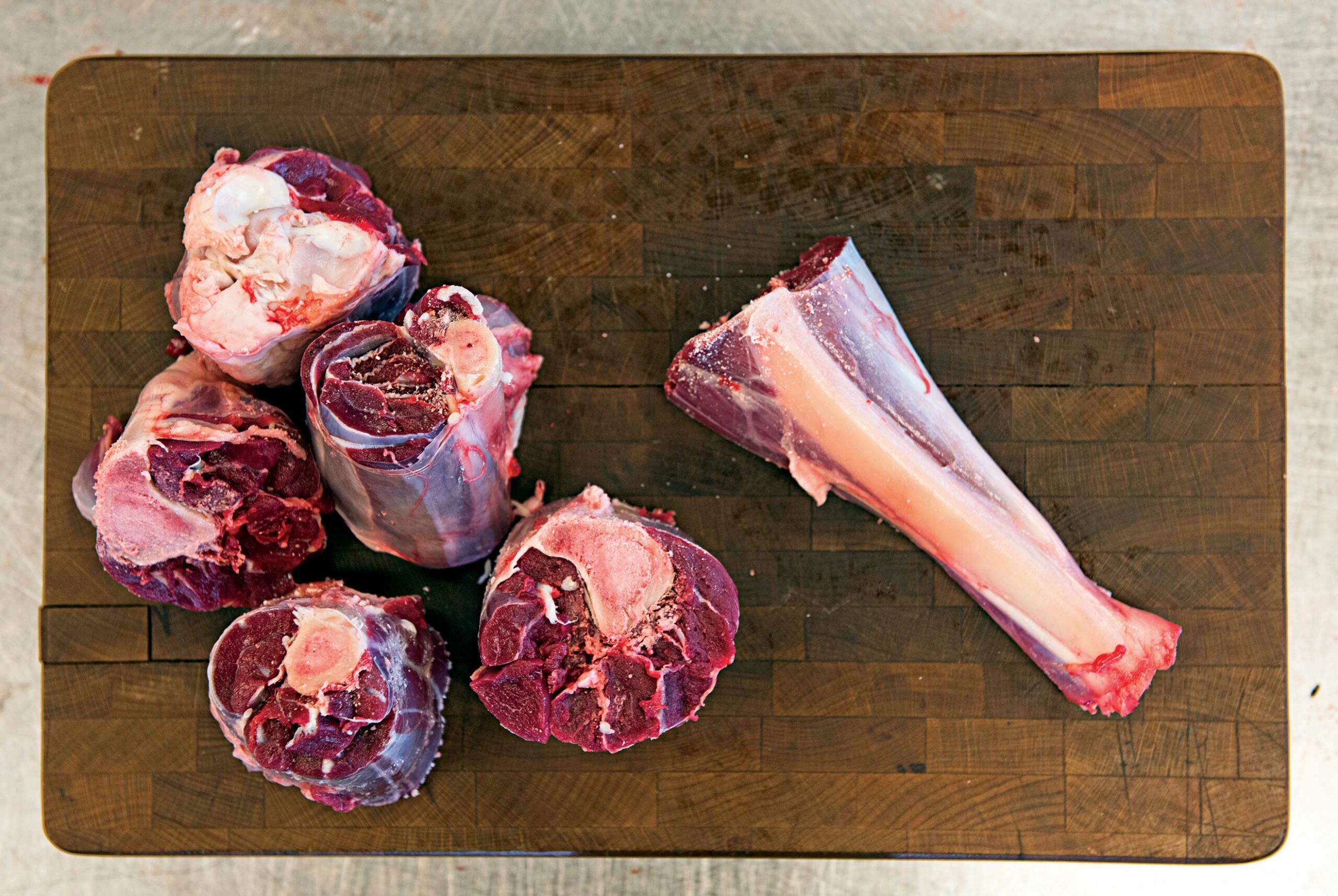
WHAT YOU’LL NEED
4 pieces of bone-in shank
Salt and pepper
¼ cup olive oil
½ tsp. cinnamon
2 carrots, cut into 1-inch chunks
1 onion, diced
1 rib celery, diced
1 Tbsp. fresh thyme
1 Tbsp. rosemary
2 cloves garlic, chopped
1 quart tomato sauce
2 cups chicken stock
2 cups white wine
For the Gremolata
½ cup chopped Italian parsley
Grated lemon zest and lemon juice (from half a lemon)
1 clove garlic, minced
¼ cup chopped pecans
2 Tbsp. olive oil
Salt and pepper
Venison Osso Buco and Gremolata by OutdoorLife
DIRECTIONS
Make the Cut: You want even pieces of meat around the shank (upper leg bone). Each shank should be sawed into 3 pieces about 3 inches thick. You’ll end up with 12 cuts, so you can make this dish three times per deer (or just once for a hungry crew). A bone saw works, but a Sawzall is faster and cleaner. Done properly, those cross-cut shanks will be the prettiest cuts of meat you’ve ever seen.
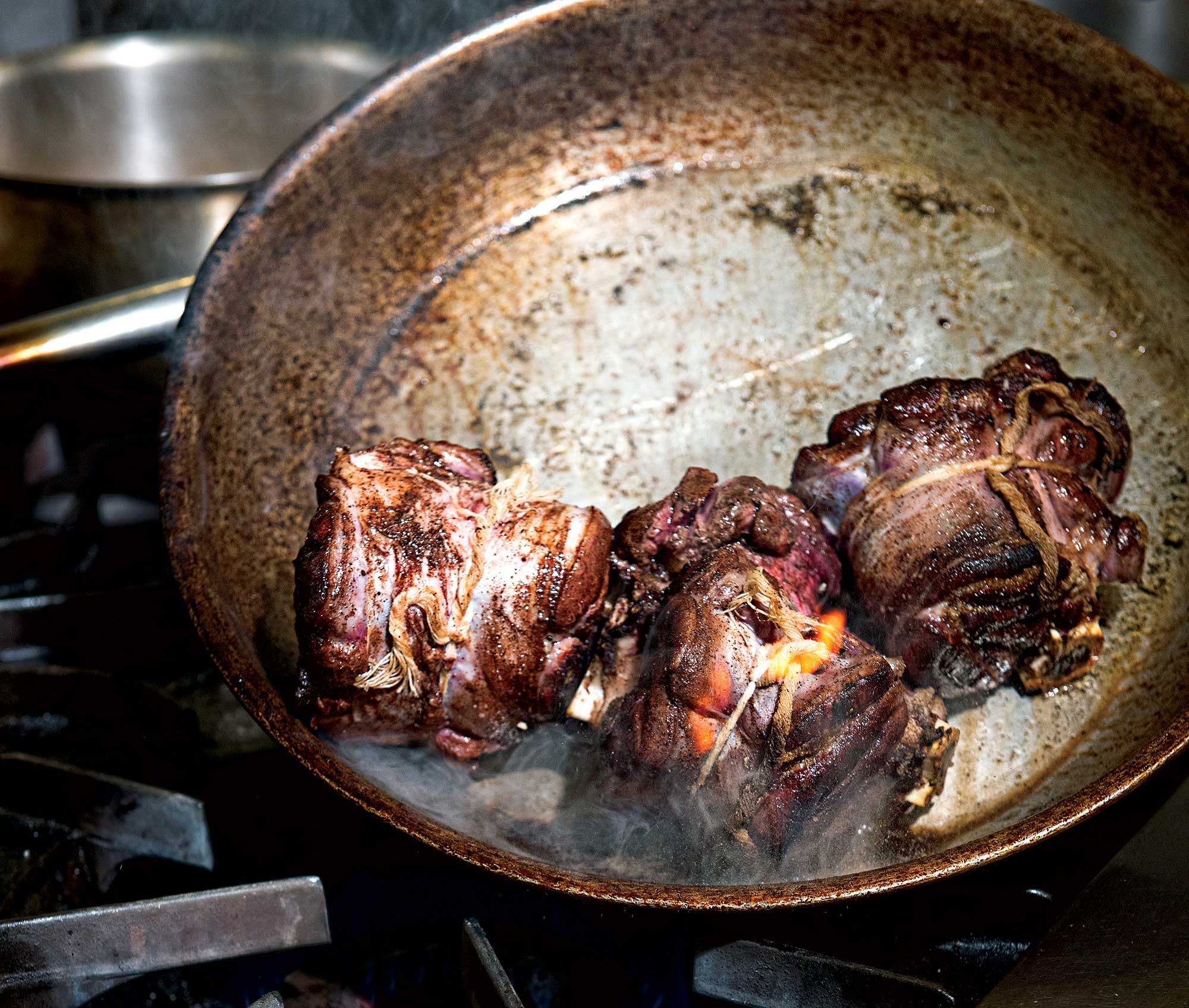
1. Sprinkle the shanks with salt and pepper about 30 minutes before you start cooking. Heat the olive oil in a heavy Dutch oven or other oven-proof pot over medium-high heat. Right before you put the shanks in, sprinkle them with the cinnamon (for whatever reason, cinnamon and venison just work together).
2. Brown the shanks on all sides, then remove and set aside.
3. Add the carrots, onion, and celery to the pot and cook for about 5 minutes. Then add the herbs and the garlic and cook for 2 more minutes.
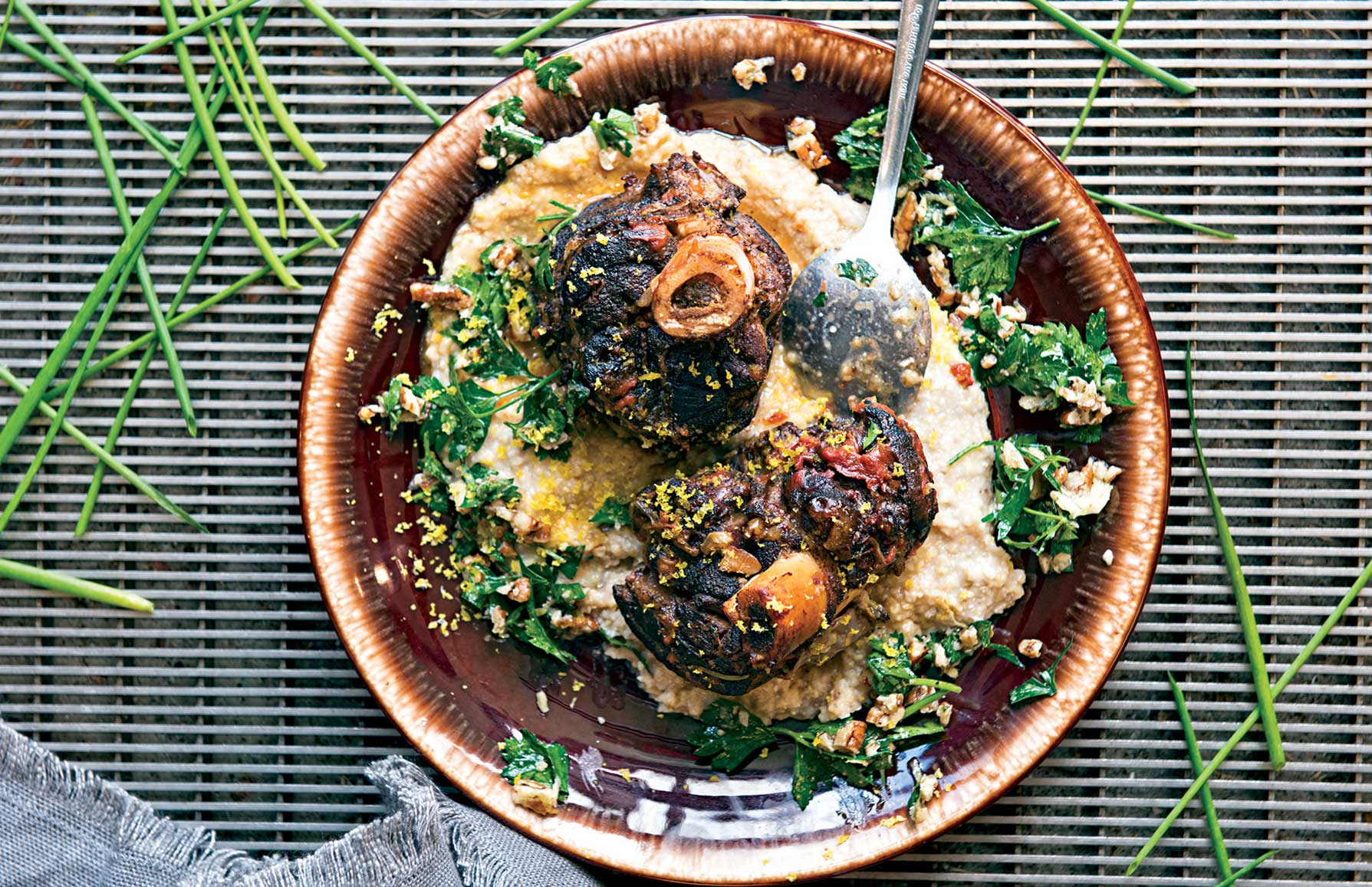
4. Place the shanks back in the pot and add the tomato sauce, chicken stock, and white wine. Bring to a boil, then cover with a lid and transfer to a preheated 325-degree oven for 2 to 3 hours. At the 2-hour mark, check to see if the meat is tender enough.
5. Mix the ingredients for the gremolata. When you are ready to serve, place a piece of shank on each plate and top with gremolata and some of the braising liquid. I serve mine with a parmesan polenta, but mashed potatoes are just as good.
READ NEXT: How to Cook Venison: The Best Ways to Cook Every Cut
Smoky Deer Ribs With Drunken Deckhand’s Glaze
By Josh Dahlke

I learned to hunt deer and make them into meat on my family’s farm in central Minnesota. It took years before I was finally confident with a blade, but a respect for utilizing every hunk of meat was instilled in me from the get-go. I’d painstakingly work around the backstraps to preserve every possible ounce of meat. But in all those years, we never kept the ribs. Why would we? Look at a rack of deer ribs and it appears there’s no meat to be salvaged.
However, that’s just an illusion.
Every deer—doe or buck—carries a trophy rack of savory rib meat. Here’s how to prepare them. Side note: The glaze concoction is intellectual property stolen from a deckhand of an Alaskan fishing boat. It was originally intended for grilled halibut, but I reworked it slightly to make it thicker and richer.
WHAT YOU’LL NEED
For the Ribs
1 rack of deer ribs
2 pots coffee
4 Tbsp. soy sauce
1 cup brown sugar
Your favorite mesquite or hickory dry rub
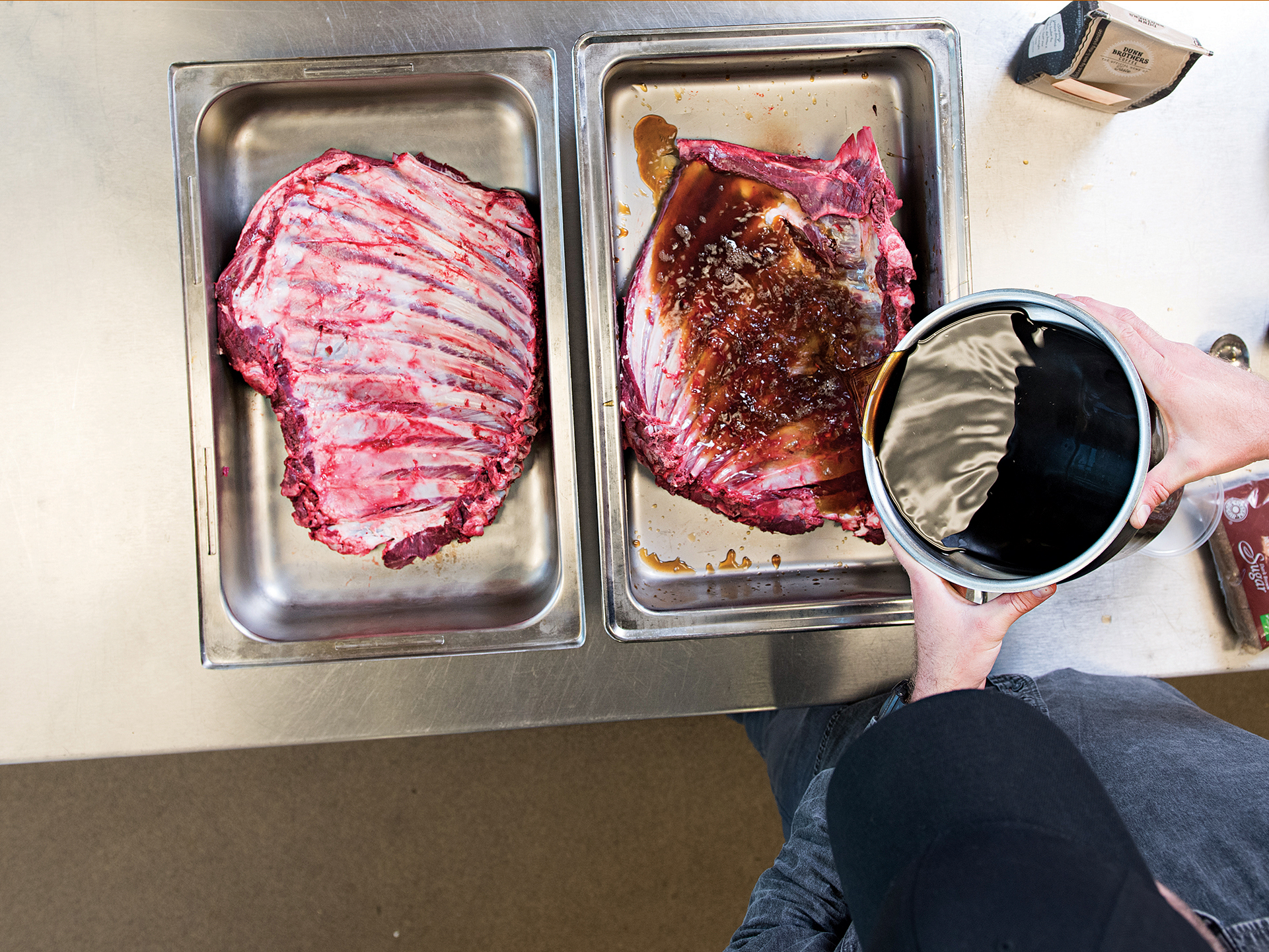
For the Drunken Deckhand’s Glaze
3 Tbsp. butter
4 Tbsp. brown sugar
2 Tbsp. Wild Turkey American Honey liqueur
2 Tbsp. soy sauce
2 garlic cloves, minced
1 Tbsp. lemon juice
1 tsp. black pepper
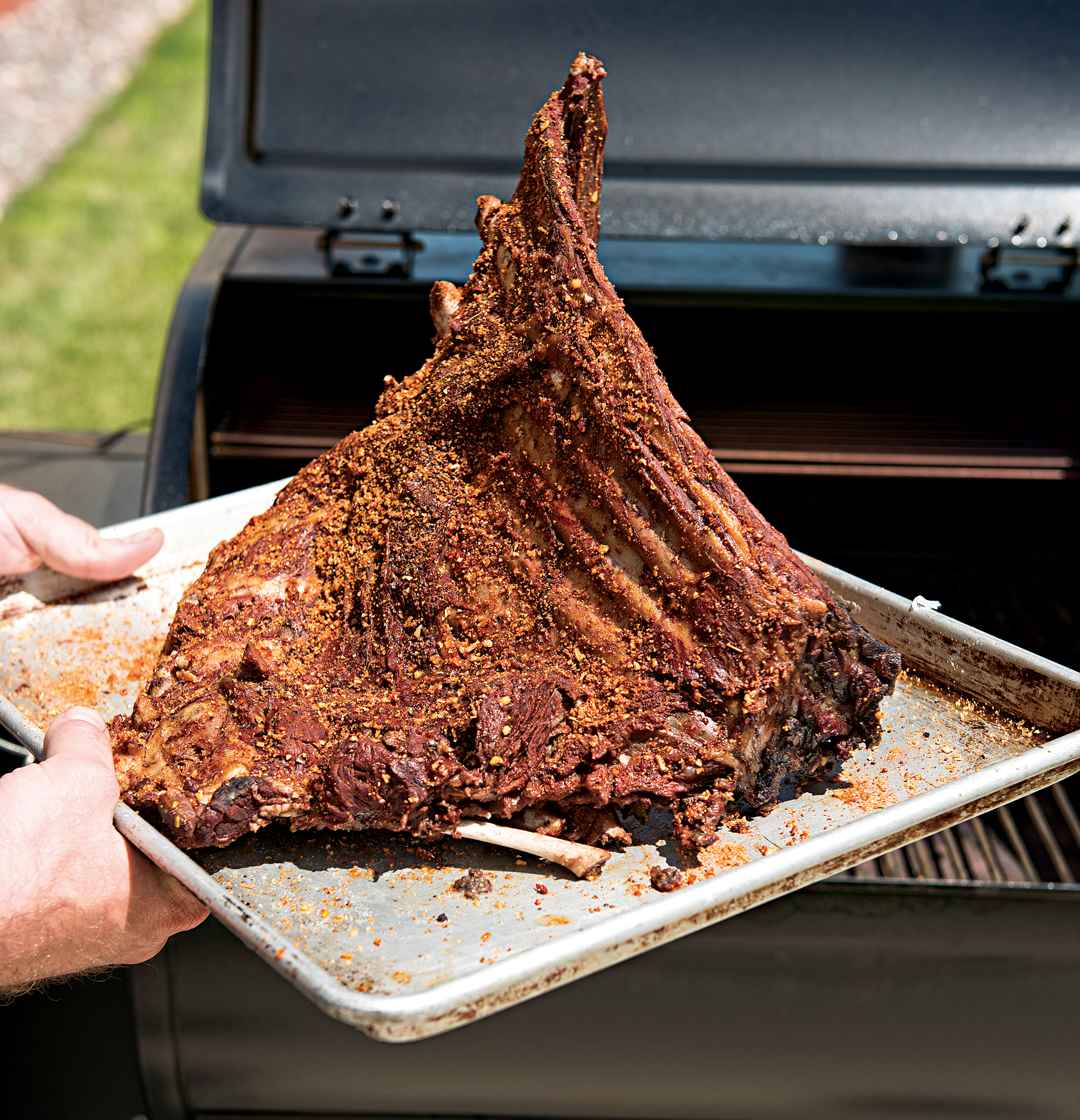
DIRECTIONS
Make the Cut: Use a hatchet, ax, or bone saw to remove the ribs from your deer carcass. It’s easiest to do this after you’ve cut out the backstraps and removed each of the quarters from the deer. If you want to halve the rack so it fits in smaller pans, use a pruning lopper or a bone saw. A reciprocating saw, if you have one handy, gets the job done quickly. If you’re going for the Fred Flintstone effect, leave them whole.
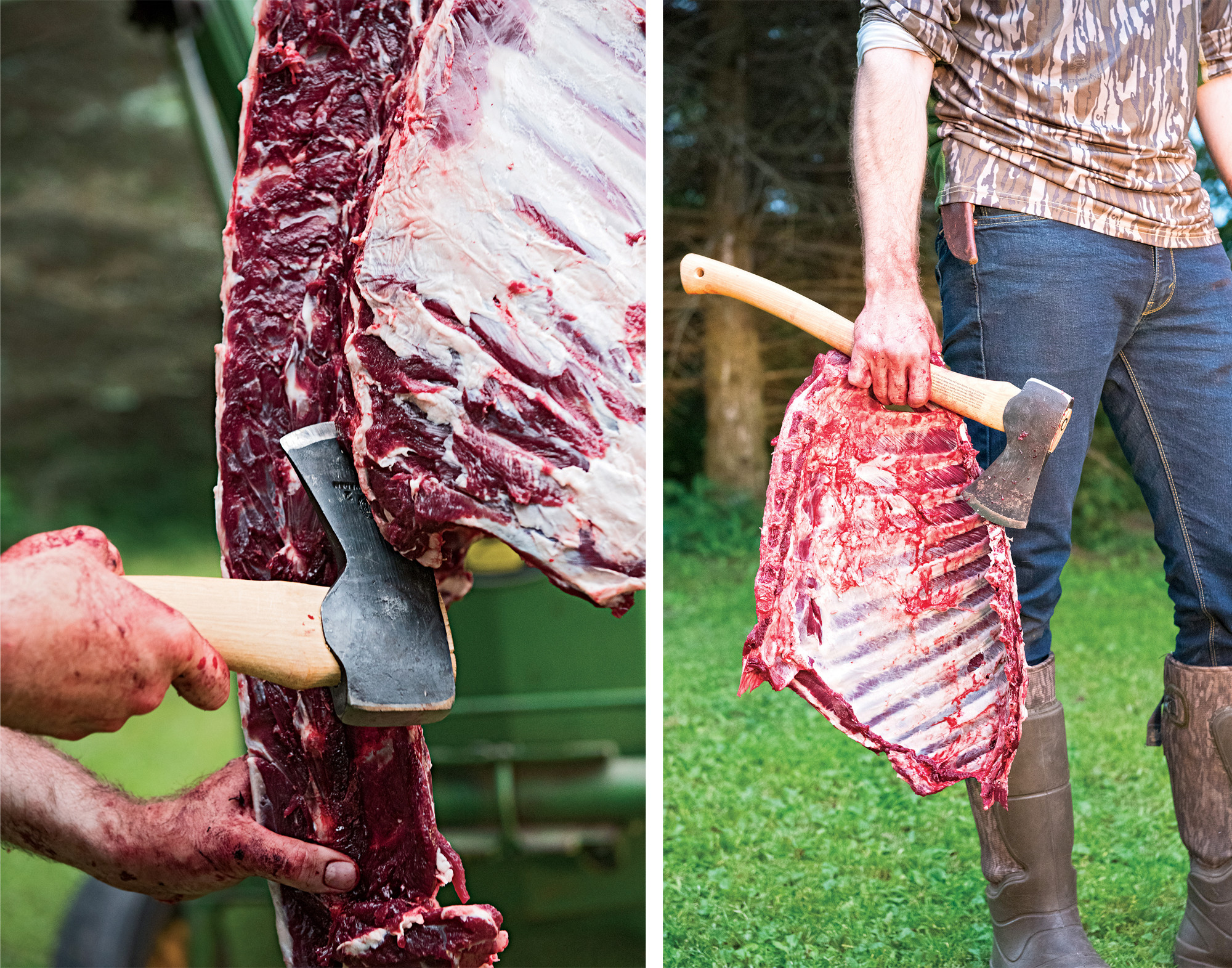
1. Mix two pots of strong coffee, the soy sauce, and the brown sugar in a shallow roasting pan. You’ll need enough liquid to fully cover the ribs. Use water to top off the pan if you’re short on coffee.
2. Submerge the ribs in the coffee-sugar bath. Cover the pan with foil and put it in a preheated 250-degree oven. Cook for about 5 hours.
3. Remove ribs from the oven, pat dry, and remove any grease or grime that might have accumulated. Coat thoroughly with your favorite dry rub. I’m a major fan of Olde Thompson Smokey Mesquite Rub. (Optional: Add a sprinkle of finely ground coffee beans to the rub to embolden the flavor.)
4. Smoke the ribs for 1 hour. A Camp Chef SmokePro Pellet Grill on the low-smoke setting is my go-to. If you don’t have a smoker, use a lidded grill with natural hardwood lump charcoal and add wood chips. Move the charcoal dand wood chips to one side of the grill and smoke the ribs on the opposite side, being careful to not let the grill get too hot.
5. While the ribs are smoking, combine the glaze ingredients in a small pot. Simmer and stir on low heat for 5 minutes. Remove from the heat source and set aside until the solution becomes syrupy.
6. Pull the ribs off the smoker and drench them in the glaze.
Heart Sandwich with Pickled Onion and Horseradish Sauce
By Krissie Mason

Some camps initiate new hunters by having them chomp into a raw heart right after the kill. Here’s another idea: Fry the heart up for this sandwich and have the new guy do the dishes.
WHAT YOU’LL NEED
1 deer heart, trimmed, washed, and patted dry
¼ cup all-purpose flour
1 Tbsp. salt
1 tsp. pepper
1 tsp. thyme (fresh is best)
1 tsp. paprika
½ cup vegetable oil
½ cup mayonnaise
1 Tbsp. horseradish
1 Tbsp. lemon juice
Crusty bread or buns
2 Tbsp. butter
Pickled onions
DIRECTIONS
Make the Cut: The heart is a firm, fist-sized muscle found between the lungs. Be careful when removing the lungs and diaphragm to not cut into it. Slice the heart vertically so there are long, large pieces to fry. Using a sharp fillet knife, remove as many of the veins and arteries as you can.
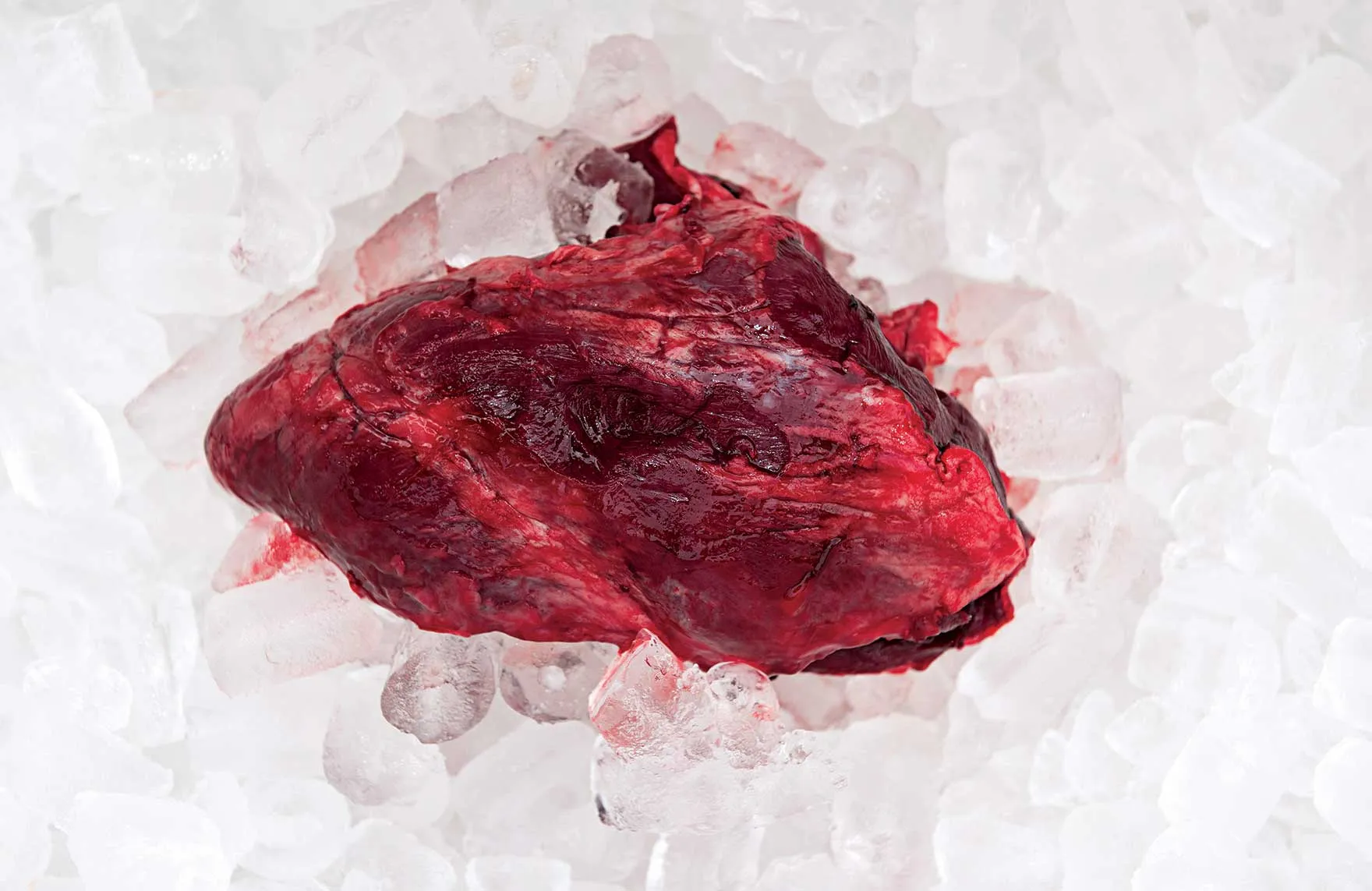
1. Mix the flour, salt, pepper, thyme, and paprika, and add the heart slices to the mixture. Roll them in the flour mixture and let it settle. The flour will draw out water and help it fry better.
2. Heat the oil in a cast iron skillet until it’s shimmering. Swirl to coat the pan and add the first cut of heart. If the oil bubbles immediately, then add the other slices. Fry for 3 to 5 minutes per side, being very careful not to overcook. When the meat is crunchy on the outside and tender on the inside, remove it from the oil and let it rest.
3. Make the sauce by combining the mayo, horseradish, and lemon juice.
4. Cut the bread, and butter each side. Empty the oil from the skillet and add the bread for a quick browning. Slather a generous portion of horseradish aioli on each slice of bread, place a heaping pile of steaming fried deer heart on top, and finish it off with the pickled onions.
5. Crack a cold one and bust open a bag of chips.
Beer-Braised Neck Roast
By Jamie Carlson
#
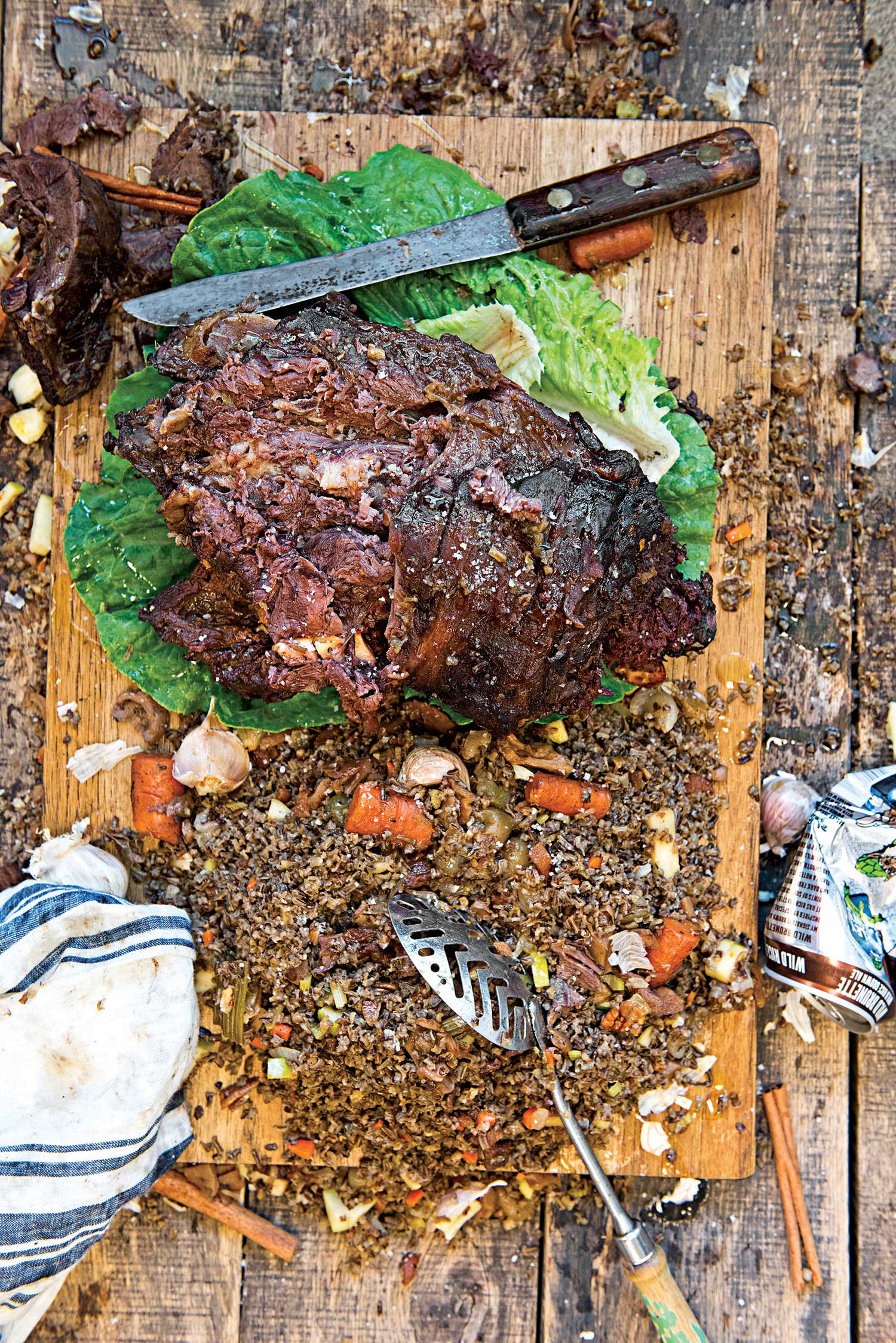
This hearty dish is anchored by a giant chunk of neck meat and plenty of dark beer, which is the perfect combination after a long, cold sit in your deer stand.
WHAT YOU’LL NEED
1 whole neck roast
Salt and pepper
¼ cup olive oil
5 strips bacon
8 oz. mushrooms
8 oz. pearl onions
2 stalks celery, roughly chopped
2 large carrots, cut into large pieces
4 cloves garlic, chopped
3 cups beer (Any dark, malty beer will work. My pick: wild rice beer made by Barley John’s called Wild Brunette.)
2 cups mushroom stock or vegetable stock
1 sprig rosemary
2 bay leaves
5 large sage leaves
1 cinnamon stick
2 sprigs thyme
1 cinnamon stick
DIRECTIONS
Make the Cut: Saw through as little of the neck as possible, so with a sturdy knife, work between the vertebrae at both ends of the neck. When you get as far as you can with the knife, finish with a bone saw.
1. Rub the neck roast with salt and pepper and set aside.
2. In a Dutch oven large enough to hold the roast, heat the oil over medium-high heat and add the bacon. Render the fat out of the bacon. Remove the cooked pieces of bacon, chop into small pieces, and set aside.
3. Leaving all the oil and bacon grease in the Dutch oven, place the neck roast in the hot oil and sear on all sides until it’s well browned. Remove the roast and add the mushrooms, onions, celery, carrots, and garlic. Cook for 2 to 3 minutes.
4. Return the roast to the Dutch oven and pour in the beer and stock. Bring to a boil. Then add the herbs, cinnamon stick, and bacon. Cover the Dutch oven and place in a 325-degree oven and cook for 3 to 4 hours.
Deer Tongue Hash
By Krissie Mason
Tongue is a delicacy in many foodie circles, but deer camp isn’t one of them—until now. Tongue is very high in fat, which is unique for venison. That high fat content makes it taste delicous. Any organ is best served fresh. So, after you tag out, make this dish for breakfast at your camp, and your buddies will soon be carefully extracting the tongues of their own deer.
The key to this dish is properly extracting the tongue, which is a bigger piece of meat than you might expect. You need to remove the tongue shortly after the kill, before rigor mortis begins to set in.
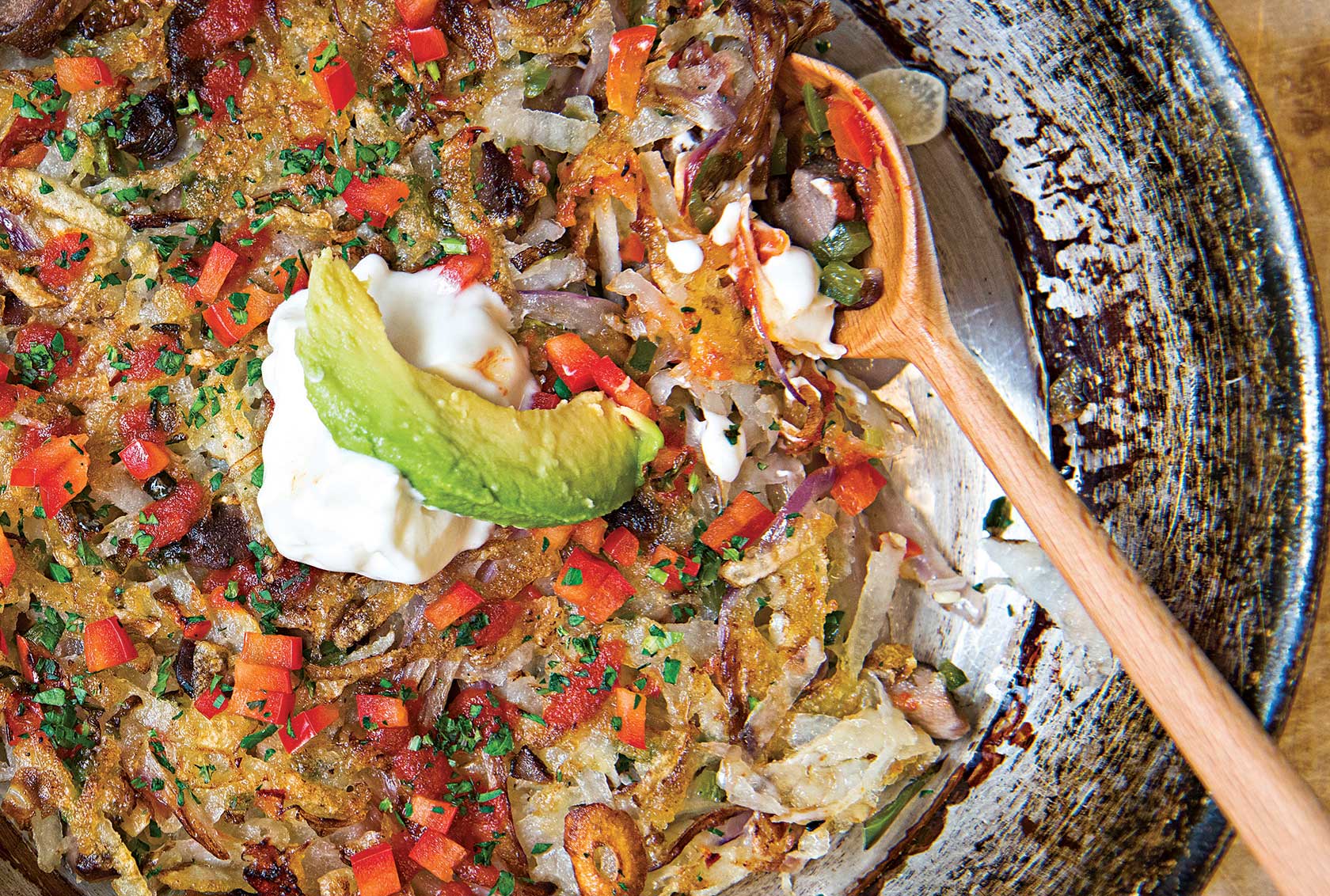
WHAT YOU’LL NEED
1 deer tongue
2 cups beef stock
1 bunch thyme
1 large carrot, diced
1 medium onion, diced (¹⁄₈ cup reserved)
1 Idaho potato, grated
¹⁄₈ cup red pepper, diced
¹⁄₈ cup jalapeño pepper, diced (remove the stem and seeds)
Salt and pepper
2 Tbsp. vegetable oil
DIRECTIONS
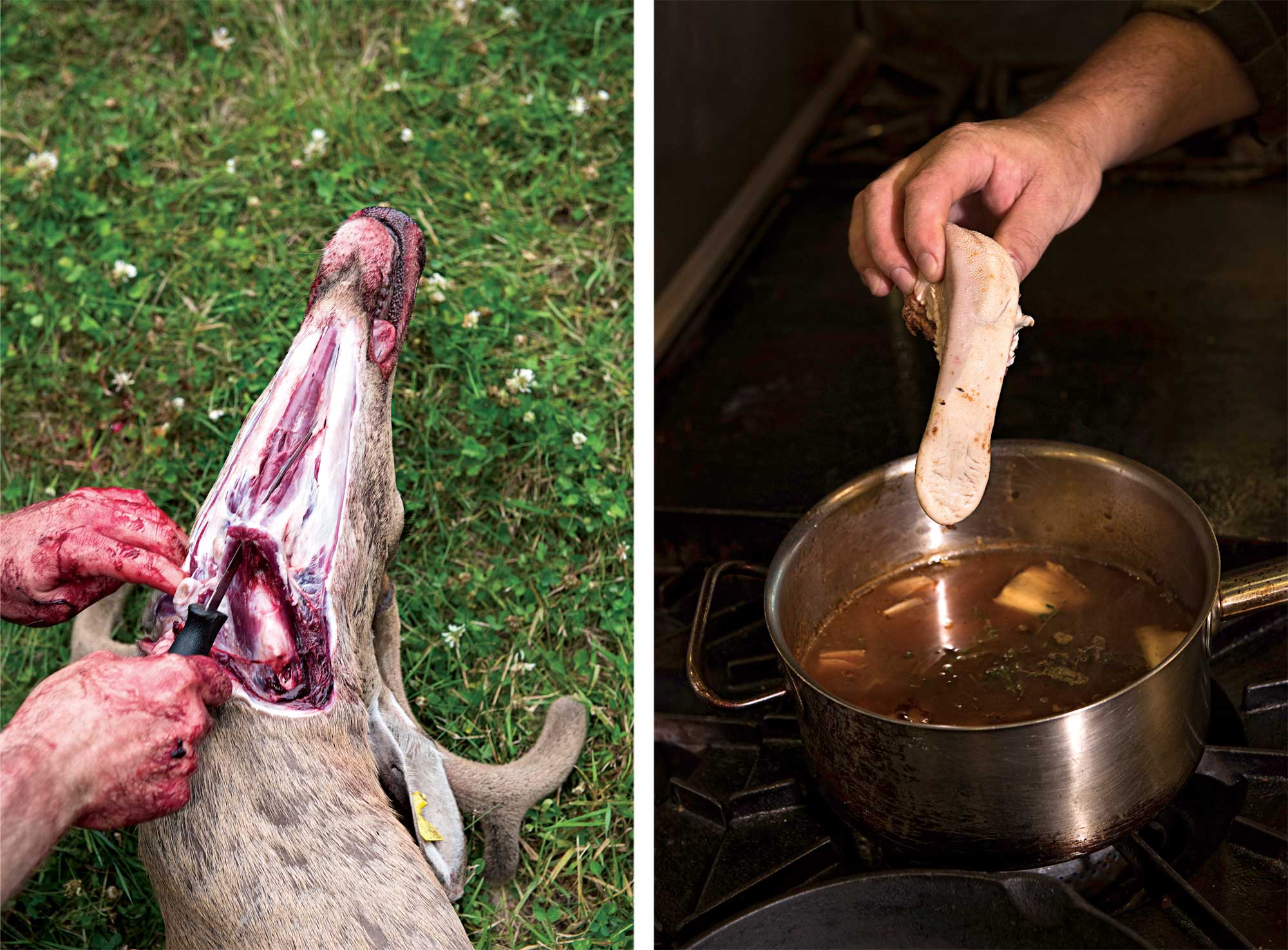
Make the Cut: Carefully cut in a triangle shape along the bottom of the deer’s jawbone, from the outside. Start at the front of the deer’s jaw and cut toward the rear. Now you’ll be able to pull the tongue out through the bottom of the jaw. Cut the tongue out at the base, making sure to get as far back as possible. You’ll end up with a piece of meat about 10 inches long.
1. Place the tongue, stock, thyme, carrot, and onion in a sauce pan and simmer on medium heat for 90 minutes, or until the tongue is tender enough to shred.
2. Take the tongue out of the stock and peel off the taste buds—that’s the top layer of skin, which should peel away easily. Shred the tongue.
3. Rinse the potato after it’s grated to remove starch. Mix it with the tongue, red pepper, jalapeño pepper, reserved onion, and salt and pepper.
4. Heat the oil in a small sauté pan to medium-high heat. Place ingredients into the pan and turn pan to medium heat. (You want the hash to fill the pan, without stacking it too high.) Press the mixture down with a spatula to help it stick together. When the edges of the potatoes start to turn brown, flip the mixture over and brown the other side.
Serve this crispy breakfast hash hot, with your choice of sour cream, ketchup, or hot sauce.
Special thanks to Chef Auggie Austreng, Lead Chef Instructor at Le Cordon Bleu College of Culinary Arts, for cooking three of the recipes in this feature (heart, liver, and tongue) and for allowing a bunch camp-cook hunters into his kitchen.
